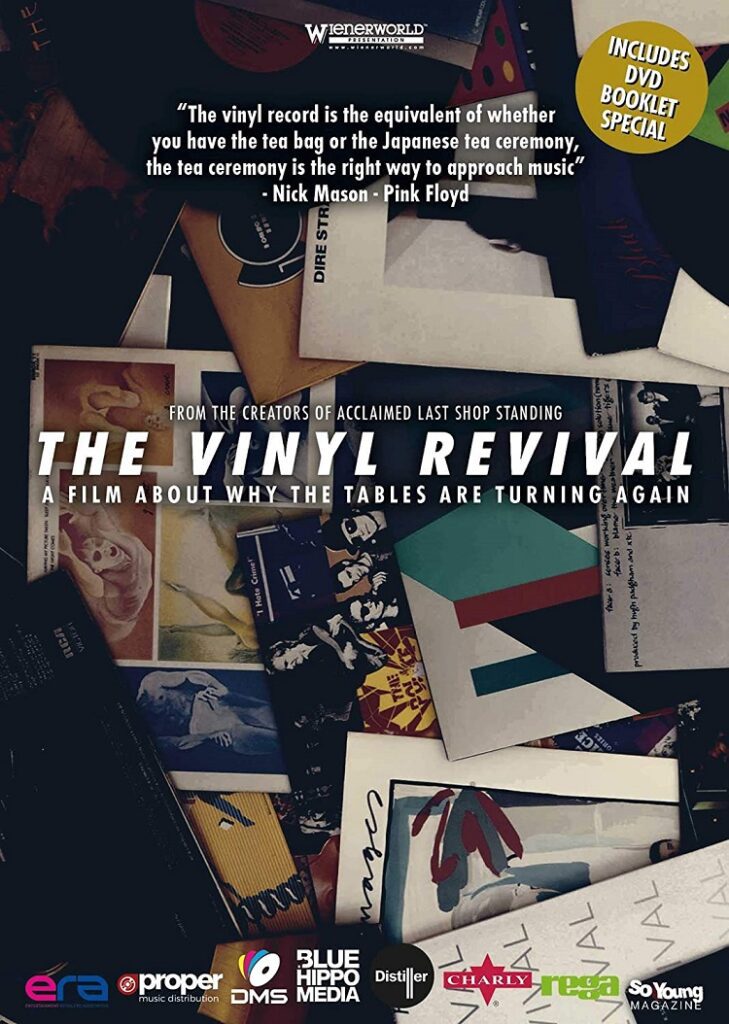
In 2011, director Pip Piper read Last Shop Standing (Whatever Happened to Record Shops) by Graham Jones and it struck a nerve. Independent record stores were dying off, and quickly. Piper wanted to find out why and he and a film crew visited 23 shops across the UK, buying records in all of them, and interviewing a number of shop owners and musicians. Those visits made up the acclaimed documentary Last Shop Standing. Several years later, something happened that neither Jones nor Piper could have predicted — vinyl came back in a big way. Piper decided to document this phenomenon in the excellent new film The Vinyl Revival.
The Vinyl Revival is based on yet another Jones book, The Vinyl Revival and the Record Shops That Made it Happen and is similar in format to its predecessor, but with a decidedly more optimistic tone. Where 10 shops a month were closing in 2009, the industry has shifted to over 10 years of sustained growth, doubling in size and, according to the film, can no longer be considered a fad. Similarly, the documentary states that in 2007-2008, vinyl made up one percent of the music marketplace and now it makes up 25 percent — a massive growth that supports the claim that it is no longer a fad.
Piper interviews several musicians, both legendary and new, about the phenomenon. Nick Mason of Pink Floyd likens the vinyl record to whether one has the tea bag or the Japanese tea ceremony, stating, “the tea ceremony is the right way to approach music.” Philip Selway of Radiohead concurs, stating that the appreciation and love of vinyl has never really gone away. Adrian Utley from Portishead still plays CDs, but loves vinyl and appreciates the artwork and the attention to detail about the recording the larger format allows.
Piper interviews Dr. Jennifer Otter Bickerdike, author of Why Vinyl Matters, throughout the documentary. For her book, she interviewed artists as diverse as Henry Rollins, Fatboy Slim, and DJ XL about the importance of the vinyl record. She argues that the physical product and being able to hold it are part of the allure of records and that no one would ever freak out over having a new music stream, but they might if they find a special record in the store.
Throughout the documentary, that is the theme that keeps coming up — that people want to hold something tangible. That the idea of having to put the record on a turntable and flip it over is appealing and makes listening to music an event, particularly for young digital natives, who grew up in an era of MP3s and downloads.
Still, the future of record shops remains a delicate one. Chain stores and supermarkets are getting in on the vinyl game, which takes away sales from record stores, many of which depend on vinyl sales in an era when CD sales have gone down drastically. Much is made of Record Store Day, but the shops want people to not just buy product one day a year. Direct to consumer (DTC), a phenomenon where bands or record companies sell direct to consumers, is another thing that hurts the shops. While this often helps the bands, eliminating the middle man (the record shops) is not good for their sustained success. Rob Caiger of Charly Records has tried to combat this. His label still does exclusives on their website, but he also ensures half of the supply goes to record stores. With more labels being cognizant of record stores, it will help to ensure their survival in the long term.
Still, vinyl doesn’t seem to be going anywhere and its future appears great. Vinyl sales are the highest they’ve been since the early 1990s with no end in sight. Whether it is the members of Cassia seeing their first record in the store or a customer finding that rare album they have been searching for, the excitement of vinyl and holding a physical product seems to be stronger than its been in a long time, as evidenced in The Vinyl Revival.